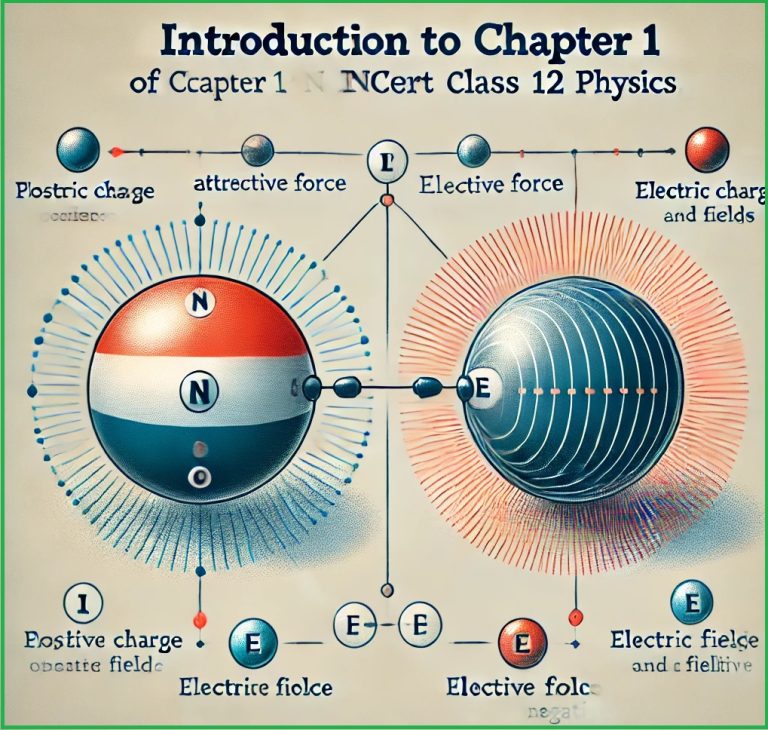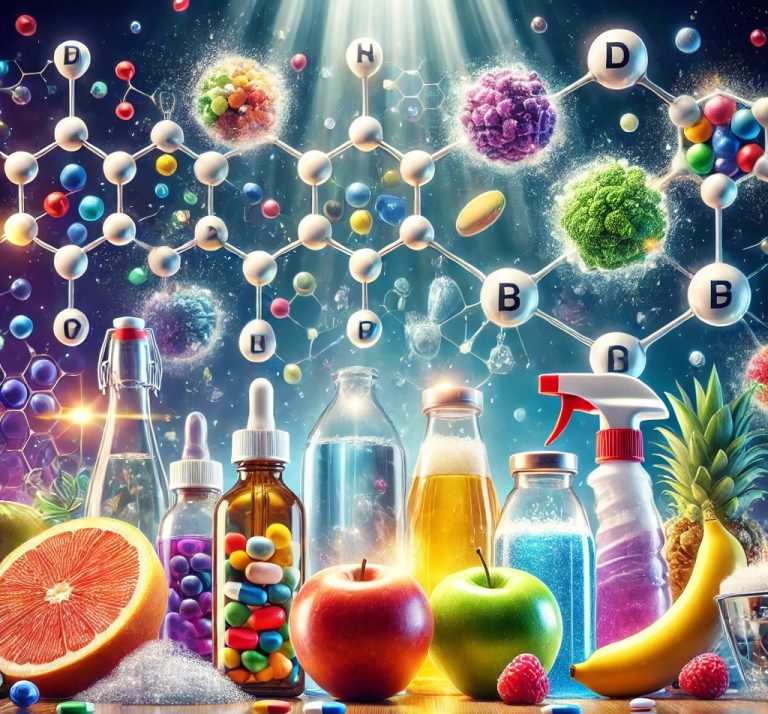Group 15 to Group 18 elements, also known as the pnictogens, chalcogens, halogens, and noble gases respectively, play unique and essential roles in the periodic table and have a wide range of applications in chemistry, biology, and industry. These groups include elements with distinct properties due to their electron configurations, which govern their chemical reactivity, physical properties, and bonding behavior. Below is an overview of each group, including detailed descriptions of each element within these groups, their unique characteristics, and uses.
Group 15: The Pnictogens
The elements in Group 15 are nitrogen (N), phosphorus (P), arsenic (As), antimony (Sb), and bismuth (Bi). The general electronic configuration for these elements is ns2np3ns^2 np^3ns2np3, which gives them five valence electrons. These elements have diverse chemical behaviors, as they range from nonmetals (nitrogen and phosphorus) to metalloids (arsenic and antimony) and metals (bismuth).
- Nitrogen (N):
- Properties: Nitrogen is a diatomic, colorless, and odorless gas, comprising about 78% of the Earth’s atmosphere by volume. It has a very strong triple bond in its diatomic form, N2N_2N2, making it relatively unreactive under standard conditions.
- Uses: Nitrogen is essential for life, as it is a major component of amino acids, proteins, and nucleic acids. Industrially, nitrogen is used to produce ammonia (NH₃) through the Haber process, which is then used for fertilizers. Liquid nitrogen, due to its low boiling point, is used as a coolant.
- Reactivity: Though nitrogen gas is relatively inert, nitrogen compounds can exhibit multiple oxidation states, such as -3 in ammonia and +5 in nitrates. These compounds participate in redox reactions and are crucial in biological and ecological nitrogen cycles.
- Phosphorus (P):
- Properties: Phosphorus exists in several allotropes, including white, red, and black phosphorus. White phosphorus is highly reactive and glows in the dark when exposed to oxygen, while red and black phosphorus are more stable.
- Uses: Phosphorus is a key component of DNA, RNA, and ATP, making it vital for all living organisms. Phosphorus compounds, particularly phosphates, are also used in fertilizers, detergents, and pesticides.
- Reactivity: Phosphorus forms compounds in oxidation states ranging from -3 to +5. Phosphorus trichloride (PCl₃) and phosphorus pentachloride (PCl₅) are examples of common phosphorus compounds. Phosphorus readily forms phosphoric acid (H₃PO₄) when combined with oxygen, which is extensively used in industry.
- Arsenic (As):
- Properties: Arsenic is a metalloid, meaning it has properties between metals and nonmetals. It is commonly found in the environment in both inorganic and organic forms.
- Uses: Arsenic is used in alloys, semiconductors, and as a doping agent in transistors. Some arsenic compounds were previously used in pesticides, though this use has declined due to toxicity.
- Reactivity: Arsenic compounds exhibit a range of oxidation states, commonly +3 and +5. The element forms compounds with both metals and nonmetals, such as arsenic trioxide (As₂O₃), a significant industrial compound.
- Antimony (Sb):
- Properties: Antimony is a brittle, lustrous metalloid with several allotropes. Its most stable form is metallic and silver-gray.
- Uses: Antimony is used in flame retardants, batteries, and in alloys with lead to improve strength and hardness.
- Reactivity: Antimony forms compounds in oxidation states of +3 and +5, similar to arsenic. Common compounds include antimony trioxide (Sb₂O₃) and antimony pentachloride (SbCl₅).
- Bismuth (Bi):
- Properties: Bismuth is a heavy, brittle metal with a low melting point and a high atomic mass.
- Uses: Bismuth compounds are used in medical applications, cosmetics, and low-melting alloys.
- Reactivity: Bismuth’s chemical behavior is less toxic than other Group 15 elements. It primarily exhibits a +3 oxidation state, and bismuth compounds are generally stable.
Group 16: The Chalcogens
Group 16 elements include oxygen (O), sulfur (S), selenium (Se), tellurium (Te), and polonium (Po). These elements have the general electronic configuration of ns2np4ns^2 np^4ns2np4, giving them six valence electrons. They tend to form compounds by gaining or sharing two electrons, resulting in -2 oxidation states.
- Oxygen (O):
- Properties: Oxygen is a colorless, tasteless, and odorless diatomic gas essential for aerobic life. It is highly electronegative and reactive, readily forming oxides with most elements.
- Uses: Oxygen is crucial for respiration in living organisms and is widely used in industrial applications, such as steel production, welding, and medical oxygen.
- Reactivity: Oxygen exhibits a -2 oxidation state in most of its compounds. However, in peroxides, it exhibits a -1 state, and in superoxides, it has a -½ state.
- Sulfur (S):
- Properties: Sulfur is a yellow, non-metallic element that exists in various allotropes, with the most stable form being octasulfur (S₈).
- Uses: Sulfur is used in the production of sulfuric acid (H₂SO₄), which is one of the most important industrial chemicals. Sulfur compounds are also used in vulcanization of rubber and in the manufacture of fertilizers and fungicides.
- Reactivity: Sulfur can exhibit oxidation states from -2 to +6. It readily forms sulfides with metals and compounds such as sulfur dioxide (SO₂) and sulfur trioxide (SO₃).
- Selenium (Se):
- Properties: Selenium is a gray, lustrous metalloid with photoconductive properties, meaning it conducts electricity better when exposed to light.
- Uses: Selenium is used in photocopiers, solar cells, and glass production. It is also an essential micronutrient for humans and animals.
- Reactivity: Selenium commonly forms compounds in oxidation states of -2, +4, and +6, such as selenium dioxide (SeO₂) and selenic acid (H₂SeO₄).
- Tellurium (Te):
- Properties: Tellurium is a brittle, silvery metalloid with semiconductor properties.
- Uses: Tellurium is used in alloying and electronics, particularly in thermoelectric devices, and is a component in solar cells.
- Reactivity: Tellurium compounds exhibit oxidation states of -2, +4, and +6, forming compounds like tellurium dioxide (TeO₂) and telluric acid (H₂TeO₄).
- Polonium (Po):
- Properties: Polonium is a rare, highly radioactive metal with a silvery appearance.
- Uses: Polonium is used as a heat source in space satellites and in antistatic devices.
- Reactivity: Due to its radioactivity, polonium’s chemistry is not well studied, but it is known to form oxides and halides.
Group 17: The Halogens
The halogens consist of fluorine (F), chlorine (Cl), bromine (Br), iodine (I), and astatine (At). These elements have the electronic configuration ns2np5ns^2 np^5ns2np5, giving them seven valence electrons and making them highly reactive, as they need only one additional electron to achieve a full octet.
- Fluorine (F):
- Properties: Fluorine is the most electronegative and reactive element. It is a pale yellow gas at room temperature.
- Uses: Fluorine is used in the production of Teflon, refrigerants, and in toothpaste as fluoride.
- Reactivity: Fluorine forms compounds in a -1 oxidation state, such as HF, and is highly reactive with nearly all elements.
- Chlorine (Cl):
- Properties: Chlorine is a greenish-yellow gas with a pungent odor.
- Uses: It is used as a disinfectant in water treatment, in the production of PVC, and in many chemical synthesis processes.
- Reactivity: Chlorine commonly forms compounds in -1, +1, +3, +5, and +7 oxidation states, including hydrochloric acid (HCl) and chlorine dioxide (ClO₂).
- Bromine (Br):
- Properties: Bromine is a reddish-brown liquid at room temperature.
- Uses: Bromine is used in flame retardants, dyes, and pharmaceuticals.
- Reactivity: Bromine forms compounds in -1, +1, +3, and +5 oxidation states, such as bromine water (Br₂) and hydrogen bromide (HBr).
- Iodine (I):
- Properties: Iodine is a purple-black solid that sublimates to form a violet gas.
- Uses: Iodine is used as an antiseptic, in medical imaging, and in salt iodization.
- Reactivity: Iodine exhibits -1, +1, +3, +5, and +7 oxidation states, forming compounds such as potassium iodide (KI) and iodine pentafluoride (IF₅).
- Astatine (At):
- Properties: Astatine is a rare, radioactive element that is solid at room temperature.
- Uses: Astatine is used in cancer treatment and as a tracer in medical diagnostics.
- Reactivity: Due to its rarity, little is known about astatine’s reactivity, but it is believed to behave similarly to iodine.
Group 18: The Noble Gases
Group 18 includes helium (He), neon (Ne), argon (Ar), krypton (Kr), xenon (Xe), and radon (Rn). These elements have a complete valence electron shell, making them extremely stable and largely nonreactive.
- Helium (He):
- Properties: Helium is a colorless, odorless, non-toxic gas, known for its low boiling point.
- Uses: It is used in cryogenics, as a lifting gas for balloons, and in gas chromatography.
- Reactivity: Helium is completely inert under standard conditions.
- Neon (Ne):
- Properties: Neon is a colorless, odorless gas, famous for its bright glow in electric discharge tubes.
- Uses: Primarily used in neon signage and in high-voltage indicators.
- Reactivity: Neon is chemically inert.
- Argon (Ar):
- Properties: Argon is a colorless, odorless gas that is more abundant in the Earth’s atmosphere than neon.
- Uses: It is used as an inert shielding gas in welding and in incandescent and fluorescent lighting.
- Reactivity: Argon is highly inert.
- Krypton (Kr):
- Properties: Krypton is a colorless gas with limited reactivity, used in certain lighting and imaging applications.
- Uses: Krypton is used in high-performance lighting and in flash lamps for photography.
- Reactivity: Krypton forms compounds under extreme conditions, such as krypton difluoride (KrF₂).
- Xenon (Xe):
- Properties: Xenon is a dense, colorless gas, and can form compounds under specific conditions.
- Uses: Xenon is used in anesthesia, imaging, and lighting.
- Reactivity: Xenon forms compounds with fluorine and oxygen, such as xenon hexafluoroplatinate (XePtF₆).
- Radon (Rn):
- Properties: Radon is a radioactive, colorless, and odorless gas.
- Uses: Radon is used in cancer therapy and as a tracer in geological studies.
- Reactivity: Radon forms limited compounds due to its radioactivity, but it can form radon fluoride under extreme conditions.
10 Questions related to Groups 15-18 elements in the periodic table, each with detailed answers and explanations:
1. Why is nitrogen gas (N₂) relatively unreactive?
Answer: Nitrogen gas (N₂) is relatively unreactive due to the presence of a strong triple bond between the two nitrogen atoms. This bond requires a significant amount of energy (around 941 kJ/mol) to break, which makes it difficult for nitrogen molecules to participate in chemical reactions under standard conditions. This stability is why nitrogen gas is commonly used in applications where an inert atmosphere is needed, such as in food packaging and certain industrial processes.
2. What makes phosphorus highly reactive compared to nitrogen?
Answer: Unlike nitrogen, phosphorus has a single bond structure in its molecular forms, such as in white phosphorus (P₄), where each phosphorus atom is bonded to three others in a tetrahedral structure. This structure creates angular strain, making white phosphorus highly reactive. Additionally, phosphorus has a lower bond dissociation energy than nitrogen, allowing it to react more readily with other elements. White phosphorus, in particular, reacts violently with oxygen and must be stored underwater to prevent it from spontaneously igniting in air.
3. How is oxygen essential for life, and what role does it play in respiration?
Answer: Oxygen is essential for life because it serves as the final electron acceptor in cellular respiration, a process that generates energy (ATP) for cells. During respiration, glucose and other molecules are broken down, and oxygen combines with the released electrons and protons to form water. This process occurs in the mitochondria of cells, enabling organisms to harness energy from food. Without oxygen, cells in most organisms cannot efficiently produce ATP, leading to cell death.
4. Why are sulfur compounds commonly used in fertilizers?
Answer: Sulfur is a crucial nutrient for plants and is required for the synthesis of essential amino acids like cysteine and methionine. These amino acids are building blocks for proteins in plants. Sulfur compounds, such as ammonium sulfate, are added to fertilizers to provide this essential nutrient, supporting plant growth and crop yield. Additionally, sulfur helps improve nitrogen uptake and resistance to environmental stresses in plants.
5. What is the significance of selenium in human health?
Answer: Selenium is an essential trace element for humans, as it plays a key role in the formation of antioxidant enzymes, such as glutathione peroxidase, which protect cells from damage caused by free radicals. Selenium is also crucial for immune function and thyroid hormone metabolism. However, while small amounts are beneficial, high selenium intake can be toxic, so it must be consumed in balanced amounts through diet or supplements.
6. Why are halogens (Group 17 elements) highly reactive?
Answer: Halogens are highly reactive because they have seven valence electrons, just one electron short of a full outer shell. This electron configuration makes them eager to gain one electron to achieve a stable, noble gas configuration. Halogens can easily form ionic bonds with metals (e.g., NaCl with sodium and chlorine) or covalent bonds with nonmetals. Their reactivity decreases down the group, with fluorine being the most reactive and iodine the least, due to decreasing electronegativity and bond strength.
7. What are the applications of fluorine and its compounds?
Answer: Fluorine and its compounds have a wide range of applications. Fluoride ions are commonly used in toothpaste to prevent dental cavities by strengthening tooth enamel. Teflon (polytetrafluoroethylene), a polymer made with fluorine, is used in nonstick cookware. Fluorine is also a key component in refrigerants (like Freon) and in the production of certain pharmaceuticals. Due to its high reactivity, fluorine can create stable and inert compounds ideal for these uses.
8. How do noble gases differ in reactivity compared to other groups, and why?
Answer: Noble gases (Group 18) are almost completely nonreactive, or inert, due to their full valence electron shell. This full outer shell provides a stable electron configuration, making them highly unlikely to gain, lose, or share electrons in chemical reactions. Helium, neon, and argon rarely form compounds under normal conditions, while krypton and xenon can form compounds with fluorine and oxygen under extreme conditions. This inertness makes noble gases suitable for use in environments where reactivity is undesirable, such as in inert gas shielding for welding.
9. Why is radon considered hazardous, and what are its primary health effects?
Answer: Radon is hazardous because it is a radioactive noble gas that can accumulate indoors, especially in poorly ventilated areas. Radon decays into radioactive particles that can be inhaled, lodging in the lungs and emitting radiation that damages lung tissue. Prolonged exposure to high radon levels is a major risk factor for lung cancer. Because radon is colorless, odorless, and tasteless, radon detectors are often used to monitor indoor levels in areas where radon emissions are naturally high.
10. What role does argon play in welding, and why is it used over other gases?
Answer: Argon is used as a shielding gas in welding because it is inert and does not react with the metals being welded. During welding, argon creates an inert atmosphere around the weld, preventing oxygen and nitrogen in the air from coming into contact with the hot, molten metal. This protection prevents oxidation and contamination, which can weaken the weld. Argon is preferred over other noble gases like helium because it is more abundant and cost-effective. It also provides better control over the welding arc due to its density.






